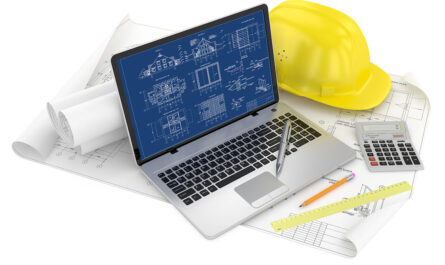The field of quantum physics deals with the behavior of matter and energy at the atomic and subatomic levels. Much about the quantum world remains mysterious to scientists due to its intrinsically probabilistic nature. However, new technologies called quantum sensors are giving researchers unprecedented insight into the strange laws that govern quantum mechanics.
What are Quantum Sensors?
A quantum sensor is a device that uses principles of quantum mechanics like superposition and entanglement to make extremely precise measurements. They can detect tiny changes in electromagnetic fields, forces, motion, and other physical properties at a level exceeding what is possible with classical sensors. At the core of every quantum sensor is a quantum system that acts as the sensing element. Some common quantum systems used include trapped ions, atoms, quantum dots, nitrogen vacancy centers in diamond, and superconducting circuits. Quantum sensors leverage unique quantum properties like interference and squeezing of quantum states to push the limits of measurement precision.
Applications in Physics
Quantum sensors are finding widespread use in physics experiments to study fundamental theories. Atomic clocks based on trapped ions or neutral atoms are the most accurate timekeepers ever created, capable of detecting space-time variations predicted by Einstein’s theory of general relativity. Atomic interferometers utilize the wave-like nature of atoms to measure tiny differences in acceleration and gravity gradients with unprecedented sensitivity – crucial for tests of gravitational theories. Scientists also rely on quantum sensors to precisely measure magnetic and electric fields in condensed matter physics experiments probing exotic quantum phases of matter. The ability to detect ever smaller field variations will push forward our understanding of quantum materials.
Healthcare and Biomedical Research
The extremely high sensitivity of quantum sensors also promises to revolutionize healthcare diagnostics and biomedical research. Magnetic resonance imaging (MRI) machines that employ quantum sensors instead of conventional detectors could image organs at the cellular level. This would allow for earlier cancer detection and more precise tracking of disease progression. Quantum optomechanical sensors are being developed to detect biomarkers indicative of diseases by monitoring mechanical vibrations of biological molecules. By leveraging the quantum properties of nitrogen-vacancy centers in diamond, researchers have built extremely small biosensors that can measure biochemical processes inside living cells without disturbing their normal functioning. This opens up new avenues for real-time monitoring of cell metabolism. Such quantum biosensors hold tremendous potential for pharmaceutical research, personalized medicine, and point-of-care diagnostics.
Navigation and Exploration
Quantum sensors also find utility in navigation, mapping, and exploration applications. They improve the accuracy and stability of navigation systems like gyroscopes and atomic clocks used in GPS, making positioning and timing information more reliable. Quantum accelerometers and gravimeters based on atom interferometry are being deployed for mineral exploration, archeological surveys, and gravitational mapping. Their high sensitivity allows detection of subtle density variations underground that indicate ore deposits or buried antiquities. Space agencies are developing quantum magnetometers, gravimeters and inertial sensors for future planetary rovers and satellites to conduct mineralogical surveys and map gravitational fields of planets, moons and asteroids with far greater resolution than before. This will revolutionize planetary science and search for life.
Fundamental Tests of Quantum Mechanics
Arguably the most exciting prospect of quantum sensors is their potential to conduct new tests of quantum mechanics itself and investigate boundaries of the quantum world. The precise measurements enabled by quantum sensors have helped confirm several counterintuitive predictions of quantum physics like wave-particle duality and quantum entanglement. Future experiments aim to more rigorously verify quantum superpositions involving larger objects and mass differences measurable with quantum sensors. There is also hope that quantum sensors may help detect hypothetical “quantum gravity” effects as they improve searches for tiny violations of quantum mechanics or general relativity. This could provide clues to develop a unified theory merging quantum physics with gravity. The next generation of quantum sensors targeting these fundamental questions could reshape our very conception of reality at the quantum scale.
Challenges and the Road Ahead
While progress in quantum sensing has been impressive, major engineering challenges still remain before commercialization and widespread adoption. Quantum systems that serve as sensors need to be isolated from external noise and disturbances to fully harness their exquisite sensitivity. However, coupling the sensor to what is being measured also introduces noise and loss of coherence. Developing sensor architectures that optimize this trade-off between sensitivity and resilience to noise will be crucial. Integrating and miniaturizing complex optics, vacuums and control hardware required for quantum sensors also presents manufacturing difficulties. Cold atom sensors involving laser-cooled atoms also face challenges in field-deployability due to their large footprint. Overcoming these challenges will rely on continued advances in fields like nanofabrication, quantum control and optimization, and miniature laser technologies. With a dedicated, global research effort, quantum sensors have the potential to revolutionize multiple industries and generate radical scientific discoveries in the coming decades. The quantum future is just beginning.
*Note:
1. Source: Coherent Market Insights, Public sources, Desk research
2. We have leveraged AI tools to mine information and compile it



